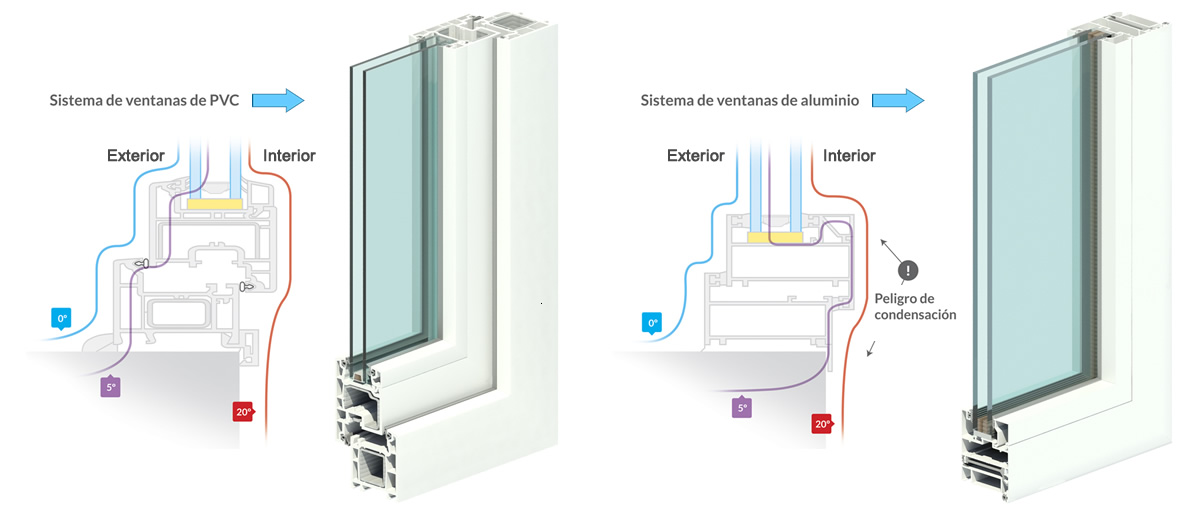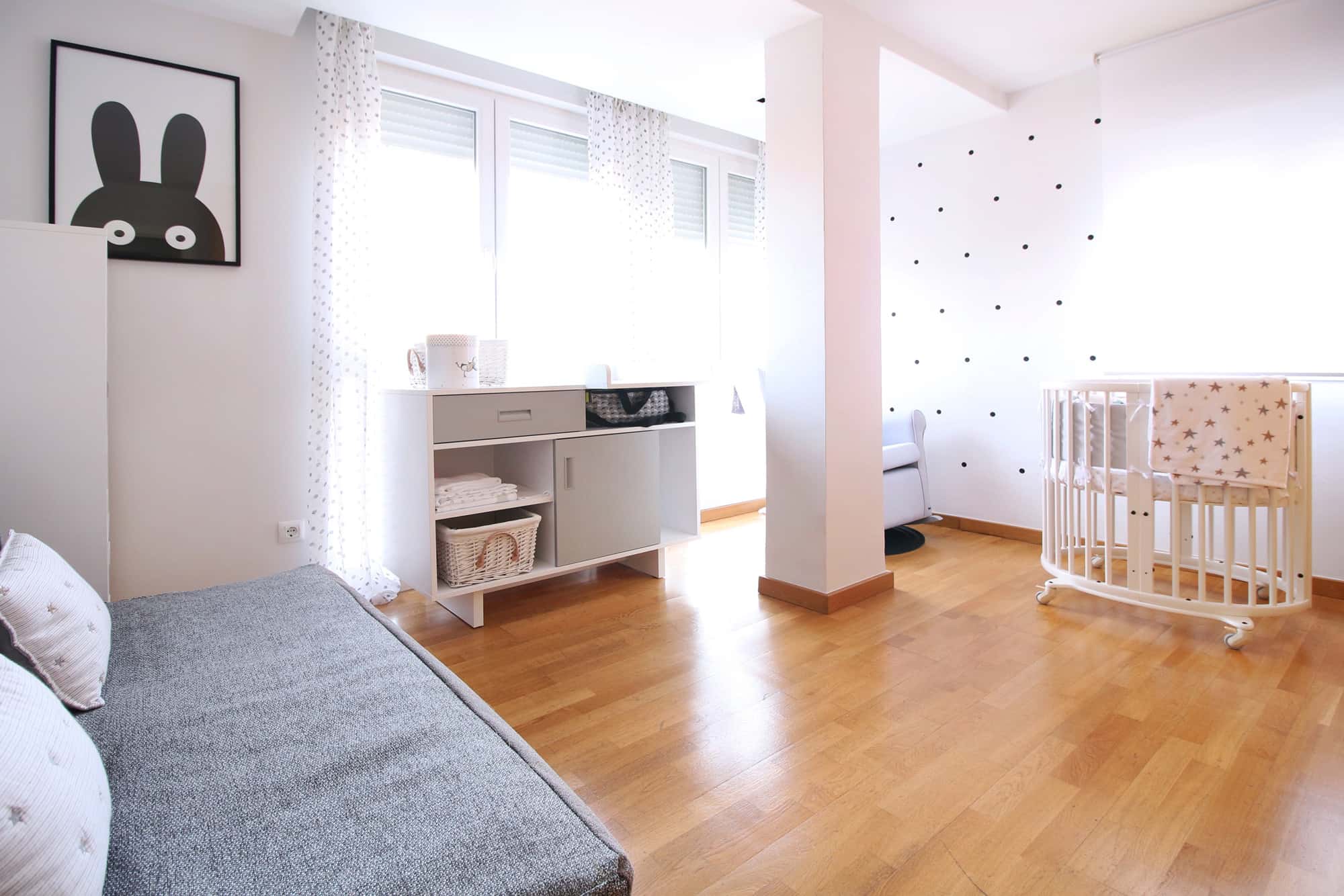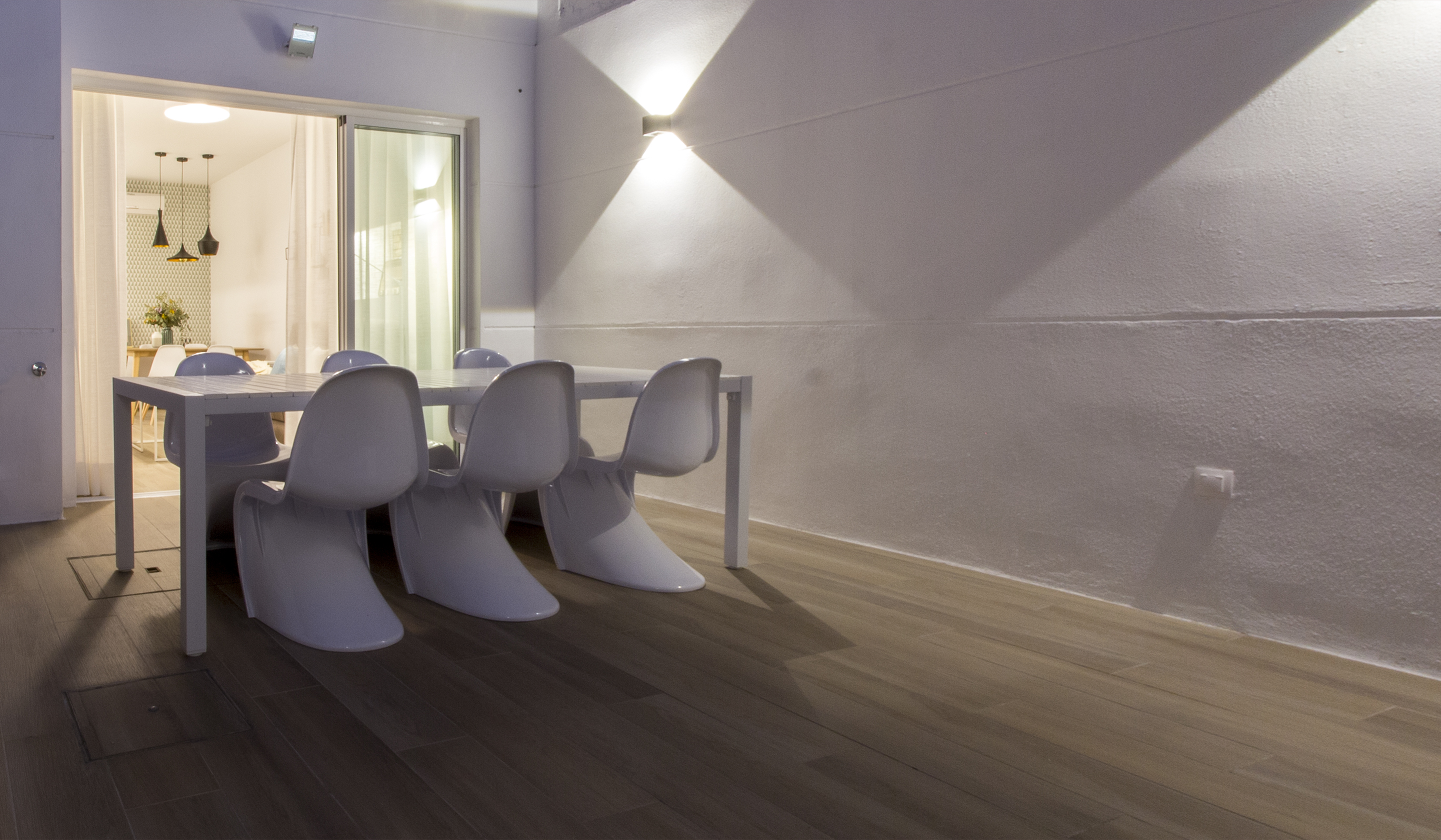PVC or aluminum? Renew your Windows without fear!

If you are one of those reluctant to get out of the bed in winter when the heating is off and the house is cold, this may be happening because your windows cannot insulate properly. Windows that do this right, would keep a warm temperature even if you turned off heating hours ago.
So here comes the everlasting question: PVC or aluminium? The battle is present now, don’t worry, these two are most demanding typye of windows and, therefore, there must be some controversy between them. When remodelling our home, replacing windows and enclosures is without a doubt one of most important parts of the budget and, truth to be told, also one that makes all our clients doubt about. The decission is quite important, as both thermal and acoustic comfort of our home will depend on it.
Energy remodelling can save up to an 80% consumption and, therefore reduce your bills. This is made, basically, through installing termal isolation (in façades, covers and floors) and changing your windows for more efficent ones with double layers and termal bridge breaking which can reduce the energy power of the whole building up to an 50%. Not only the material (Aluminium or PVC) is important here, but also the kind of glass used, so let’s take a further look to this.
So, what should we take into account when choosing one material above other?
Which is best, aluminium windows or PVC?
Aluminium is preffered by those with a large experience in this field. PVC is somehow a new material. But, which is best? First of all, we should tell both offer advantages and disadvantages.
Aluminium Joinery: advantages and problems
Aliminium joinery guarantees durability and high resistance. It creates ítems that can be kept unchanging to sun light and rain. Aluminium is a resistant material to climate harshness, lines, and color weathering (it is antioxidant). It does not need any kind of maintenance. Besides, it allows us create slim profiles, so artistically, we could say it is a more satisfaying material. Repairing aliminium is also much easier and therefore cheaper, as its format is mechanic and it does not have continuos sodler unlike PVC.
Some problems though are, it is metal and we cannot forget this kind of material is energy conductive, so they tend to loose heat unlike PVC. This can be solved anyway with termal bridge breaking in the frame and accurate glass, but this implies a higher cost. It has a major expansion index, which also increases the loose of water tightness. It is more expensive than PVC and not so thermally isolating.
PVC Joiner: advantages and problems
Vinyl Polichloride or PVC is made of a 57% of common salt and 43% of petrol (carbon, hydrogen, chlorine). It belongs to the group of organic materials with a better technical qualification regarding fire prevention. It is plastic and therefore and isolating material, so it offers a higher thermal and sound isolation, and it is cheaper than aluminium.
PVC has some issues though, depending of its quality, as its finishing colour (lacquered) can change after some time and you will find some expansion typical of this material with temperatura changes. So this can lead to more more breakdowns in closing so heat will break in from outside. PVC items are a bit heavier and therefore, finishing is rougher.
Opening systems
There is no doubt the space availability is clue to choose some kind of opening above other. So you better know about advantages of each one.

Sliding windows. No additional space to get opened, to smaller places. The closing is not hermetic though so termal isolating is a bit poor. Also, in order to clean these windows, you need to take the glass ouit of the frame.
Usable windows. They take some place to get opened, so they cannot have any other item around that may block it to open. Oscillation axis is on one side of the frame and the glass. Opening windows towards the inside are easier to clean.
Frame windows. Doubtlessly, the most versatile system as it can be opened both towards one side or inside. They are common due their thermal, sound and water tightness features. Swing system is ideal to air out your home withouth the need to open it completely.
Which glass suits my house better?

Sun controlling glass
“The wrong window can reduce the quality of a great glass; same as the wrong glass can destroy the isolating capacity of a great window.”
When renewing our house windows, we can choose between simple or double glass.
Thickness and kind of glass also affect isolation. There are many technical issues that we try to explain to our clients daily, so they can know and understand what they are installing at their homes but the conclusión is clear: the thicker the glasses are and the wider is the space among them, the higher is the isolation and therefore, greater is the power efficiency.
• Simple or monolithic glass: they are the most basic and are installed in lower quality Windows that do not require isolating features, neither soundproof or security measures. They allow power energy and sunlight get in. Suggested thicknes is 4mm.
• Double cavity glass: composed of two or more layers (glasses) separated by a cavity which is hermetically sealed. The thicker the glasse are, the better the isolation will be.
Double glass windows, compared to simple ones, reduce the lose of heat due to the space of isolating air among the glass layers. Also, they allow light break in and tkae advantage of natural sun heat. Suggested thicknes is 4/6-16-4 mm.
• Double glass with sound isolation: it consists of placing between two layers one or more 1mm polivinyl butiral laminations (PVB) that provide sound and thermal isolation. Suggested thicknes is 4+4-12-6 mm.
• Security or lacquered double glass: same as the previous one, it consists of adding PVB lamination among glass layers which provide resistance and flexibility. Also, if the glass gets broken, it will get spread in small pieces which will remain sticked on intermediate layers. Suggested thicknes is 4+4-12-4 mm.
• Low emissive (low-E) double glass: they strengthen the quality of a conventional double glass contributing to saving energy, as they can get an isolating coefficient equal to a wider 30 cm brick wall.
In order to do so, they have a pulverized layer, usually out of silver, in one side of the glass, that prevents power transmission. Suggested thicknes is 4-12/16-4 mm.
• Sun controlling double glass: they have a metal layer that reflects sun light to avoid over heating inside the house. By this, it gets a higher thermal isolation while natural light can get it withour problems.
Ideal if you do not want sun to damage your furnitures due to UV rays. Suggested thicknes is 4-12/16-4 mm.
• Triple and quadruple glass: you can add more glass layers progressively (three, four…) which help enhance thermal and sound features. They are typical for some specific situations.
We wish all this information has been useful for you to solve any doubt regarding windows. As you can see, they are a much more complex ítem than you had initially thought. So, it is definitely worthy to take some time choosing the best type of window which will make your home a unique and warming place.
Still have any doubts? Do not hesitate to contact us! We will be delighted to solve your doubts and suggest the best solutions for your home.


